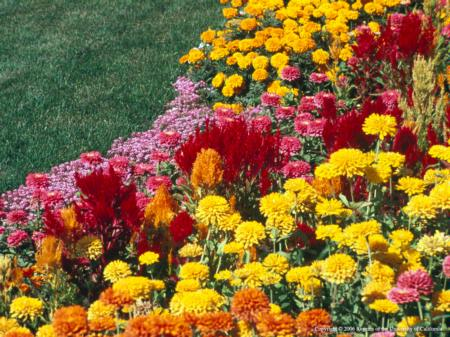July Chores
By Christine Withers UCCE Master Gardener
Gardens are in full swing now, and the summer solstice is just a few days away! The calendar is telling us it's time to focus on watering, deadheading, fertilizing and new plantings.
A plant's water needs depends on many factors including how deeply rooted the plant is, plant species, soil type and age of the plant. There are three general categories of water recommendations based on plant type suggested in UC ANR Master Gardener Handbook.
- Leafy vegetable and bedding plants need 6-12 inches of water to be successful.
- Small shrubs, cool-season turfgrass, corn and tomatoes need 12-24 inches of water.
- Large shrubs, trees and warm season turfgrass need 1.5 to 5 feet of water, again depending on the specific species.
How often you water will depend on the amount of moisture your plants lose through transpiration and evaporation from the soil. You can test the soil with a moisture meter or just dig into the soil ½ an inch to see if the soil is damp before watering. And remember, it's always best to water during the early morning hours. Watering at the end of the day encourages pests and the development of fungal disease.
More irrigation tips are available on the UCCE of San Luis Obispo website - http://cesanluisobispo.ucanr.edu/Drought_Information/Vegetable_Gardens/
Maintaining good sanitation in the garden is very important. Deadheading (removing spent flowers) encourages new production on both your flowers and vegetables. Be diligent in removing any dropped fruit. Unfortunately, dropped fruit will not transform itself into usable compost. Instead, it will provide insect and vertebrate pests (such as squirrels, gophers, etc.) with a tasty food source. Additionally, any leaves or flowers from plants with disease or pest problems should be bagged and removed from the garden to prevent the spread of that pest or disease. Clean leaf litter works as an effective and inexpensive mulch.
Just like watering, fertilizer should be applied according to the specific plant's needs to avoid waste and unnecessary leaching. Take a little time to familiarize yourself with the basics of fertilizer. Answers to some common questions can be found on the UC California Garden Web - http://cagardenweb.ucanr.edu/Vegetables/?uid=26&ds=462
Many plants may be started in July so consider switching out the old and replace bolted lettuce with plants such as artichoke, cauliflower, squash, celery, watermelon, pumpkins, cantaloupes, and parsnip. Then, after the day cools down, sit outside and enjoy our lovely evenings along the central coast.
